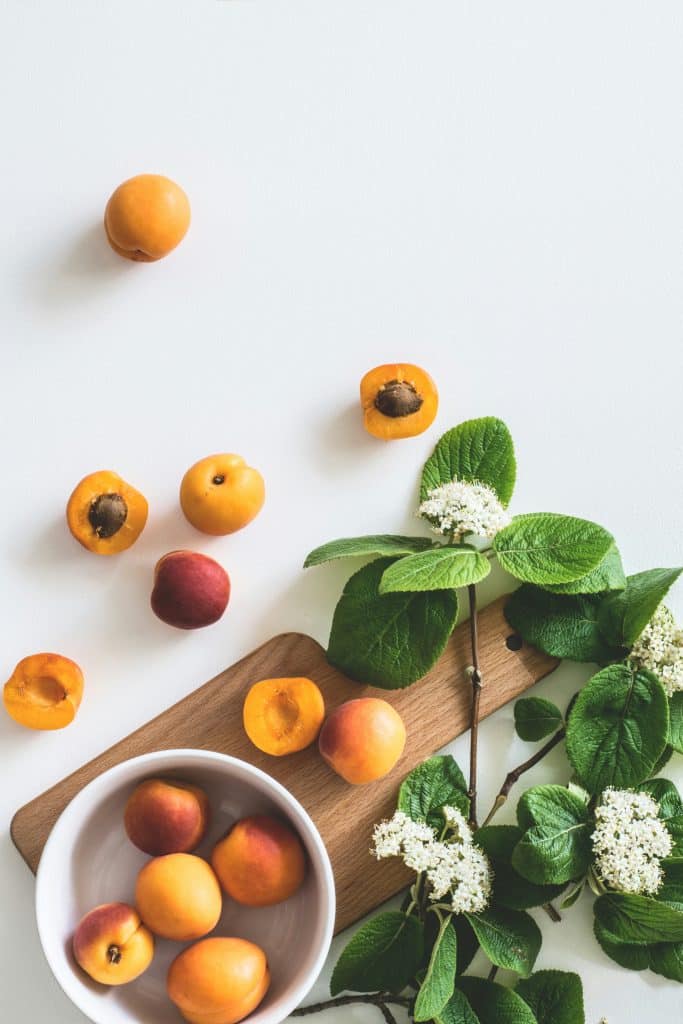Love Local Ontario Produce | Fresh, Local, and Simple: A Practical Guide to Tender Fruit
Fresh, Local, and Simple: A Practical Guide to Tender Fruit

What is Tender Fruit?
Tender fruits are synonymous with summer in Ontario. Sweet, juicy peaches; fresh, tart cherries; and ripe nectarines are only a few of the delicious varieties grown in Ontario. They are characterized by their tender, and easily-bruised flesh. Due to their delicate flesh and high-water content, they don’t last long once they’re ripe, and are best consumed immediately or frozen.
Stone fruit is a botanical classification for fruit with a large pit or stone in the centre surrounded by flesh. Tender fruit is more of a regional term used mostly in Canada, and refers to apricots, peaches, nectarines, plums, and cherries.
Where to Find Them Locally
In Ontario, the growing season for tender fruit is quite short. Peach and nectarine season runs from mid-July to the end of September, apricots are available July to mid-August, cherries mid-July to mid-August, and depending on the variety, plum season runs from the middle of July to the middle of September.
You can find local tender fruit at farmers markets, roadside stands, or take part in the fun and pick your own at U-pick orchards. Additionally, look for Foodland Ontario signage at your grocery store to ensure you’re buying locally grown produce.
How to Purchase, Store, and Prepare
There are two main varieties of peaches in Ontario: Semi-freestone, and Freestone. Essentially indicating how easily the flesh separates from the pit, and they range in colour depending on the variety. The ‘blush’ on a peach, or the pinkish red colouration, does not indicate ripeness. When purchasing peaches, choose ones that are firm and fragrant. You will know a peach is ripe and ready to eat when it smells sweet, and the flesh is soft enough for you to gently press it. Let them ripen on your counter, and then transfer to the fridge, or cut into chunks and freeze.
Enjoy them in crumbles or cobblers, grill and add to a salad, or blend into a smoothie or marinade.
Here are some recipes to try:
Nectarines are similar to peaches, minus the fuzz, so when it comes to selecting a good one, use the same tips you would when selecting a good peach. Similarly to peaches, let nectarines ripen on your counter rather than in the fridge to prevent a mealy texture. Once they are ripe, slightly soft, and very fragrant, you can enjoy them immediately, or keep in the fridge for up to a week.
Enjoy them raw or cooked, just like you would a peach.
Here are some recipes to try:
Look for apricots that are bright orange with a peachy ‘blush’, are firm to the touch, and blemish free. Like most fruit, they’re best eaten when freshly picked and ripe, but you can store them in the fridge once they’re ripe.
For a savoury application, pair with meat in a marinade or stuffing. Or simply enjoy them raw or dried.
Here are some recipes to try:
Ontario grows two types of cherries: Red Tart (sour) cherries, and Black Sweet (sweet) cherries. Sour cherries are often found pitted and frozen in the grocery store, whereas sweet cherries are found fresh in the produce section. Buy ones that are bright in colour, unblemished, and keep in the fridge.
Both varieties can be used for jams or preserves. Sour cherries are commonly used in pies, compotes, or clafoutis.
Here are some recipes to try:
Ontario plums range in shape and colour and fall into two varieties: Japanese and European. Yellow and red plums are Japanese plums, blue plums are European plums. Both are great for eating raw, and blue plums are preferred for cooking. Ontario plums are often sold slightly firm, so don’t be afraid to buy a firmer fruit and let it ripen at home.
Enjoy plums in cereal, yogurt, or on top of pancakes. Or bake into cakes, muffins, or crisps.
Here are some recipes to try:

Nutritional Value & Sugar Myths
Tender fruits are rich in vitamins and minerals, antioxidants (especially plums and cherries), and fibre. They contain natural sugars, but it shouldn’t be compared to added sugar. Natural sugars, like those found in tender fruits, come packaged with other beneficial nutrients such as fibre and micronutrients. There is no need to avoid fruit because of their sugar content.
Tender fruit season in Ontario is short, so enjoy it while it lasts. Look for the different tender fruits at your local grocery store, or farmers markets. They’re delicious, nutritious and easy to prepare. Experiment with different recipes, and cooking techniques to find your favourite way to enjoy them.
